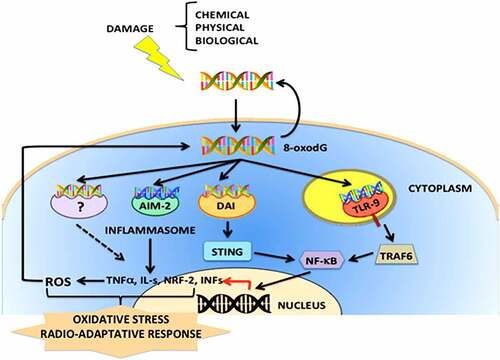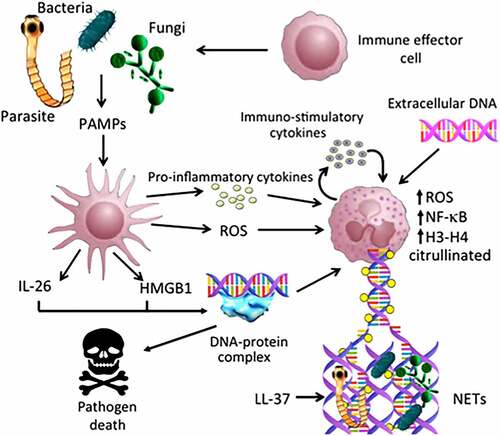Figures & data
Figure 1. Schematic representation of the cellular signaling pathways activated by oxidized exDNA (8-oxodG). The exDNA released by different mechanisms of cellular stress and cell damage, might be enriched with oxidized nucleotides, forming complexes with proteins and/or lipids. The 8-oxodG acting as DAMP (Damage-Associated Molecular Pattern) signal might easily enter into cells and interact with different PRRs (Patterns Recognition Receptors) such as STING, AIM-2, RIG-1 or DAI, and ROS (Reactive Oxygen Species) induces DDR (DNA Damage Response) responses

Figure 2. Possible implications of exDNA in immune response. Bacteria, fungi and other opportunistic parasites might be recognized by the immune system cells such as macrophages and dendritic cells, and thus induce the release of pro-inflammatory cytokines as well as the generation of ROS (Reactive Oxygen Species). Several stimuli trigger the activation and set up of the NETs (Neutrophil Extracellular Traps), which involve the participation of several proteins such as PAD4, NF-kB and histones, that help in the construction of the DNA molecular network and to trap different pathogens. All this induces the participation of multiple immune cells, which ultimately leads to the death and elimination of exogenous microorganisms

Table 1. Biological processes in which exDNA participates in eukaryotes
